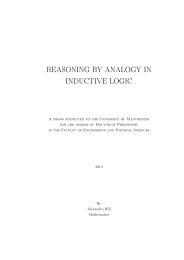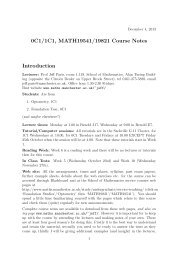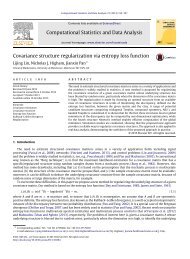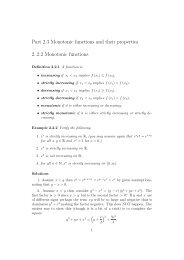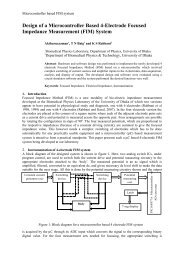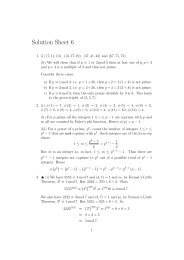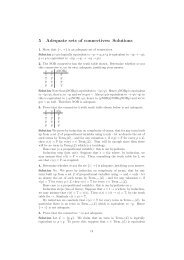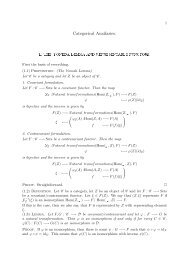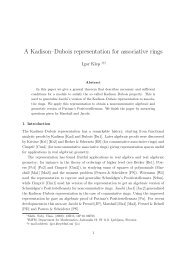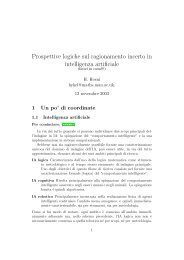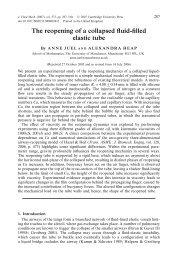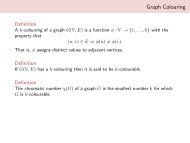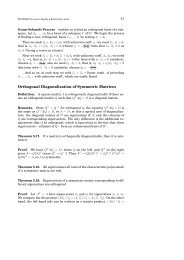The Kumaraswamy GEV distribution - University of Manchester
The Kumaraswamy GEV distribution - University of Manchester
The Kumaraswamy GEV distribution - University of Manchester
You also want an ePaper? Increase the reach of your titles
YUMPU automatically turns print PDFs into web optimized ePapers that Google loves.
Double- Bounded probability density function (DB-PDF)<br />
<strong>Kumaraswamy</strong> (1980)proposed a two parameters <strong>distribution</strong> with double-bounded<br />
support known as DB-PDF and later so-called <strong>The</strong> <strong>Kumaraswamy</strong> <strong>distribution</strong>.<br />
FKum(z) = 1 −<br />
�<br />
1 −<br />
fKum(z) =<br />
1<br />
a b<br />
(d − c)<br />
� �a�b z − c<br />
;<br />
d − c<br />
� �a−1 � � �a�b−1 z − c<br />
z − c<br />
1 −<br />
.<br />
d − c<br />
d − c<br />
Making the linear transformation X = Z−c<br />
. We can obtain the standard <strong>Kumaraswamy</strong><br />
b−c<br />
<strong>distribution</strong>. <strong>The</strong> pdf <strong>of</strong> the latter<br />
FKum(x, a, b) = 1 − (1 − x a ) b ; x ∈ (0, 1)<br />
fKum(x, a, b) = abx a−1 (1 − x a ) b−1 ; x ∈ (0, 1)<br />
<strong>Kumaraswamy</strong> <strong>distribution</strong> is very similar to the beta <strong>distribution</strong>, but this formula has<br />
some advantages over beta <strong>distribution</strong>. Jones(2009) explored the background <strong>of</strong> the<br />
Kum <strong>distribution</strong> and, more importantly, made clear some similarities and differences<br />
between the beta and Kum <strong>distribution</strong>s.<br />
S.Eljabri (<strong>University</strong> <strong>of</strong> <strong>Manchester</strong>) Kum-<strong>GEV</strong> Distribution MRSc, Sep 28,2012 8 / 39



